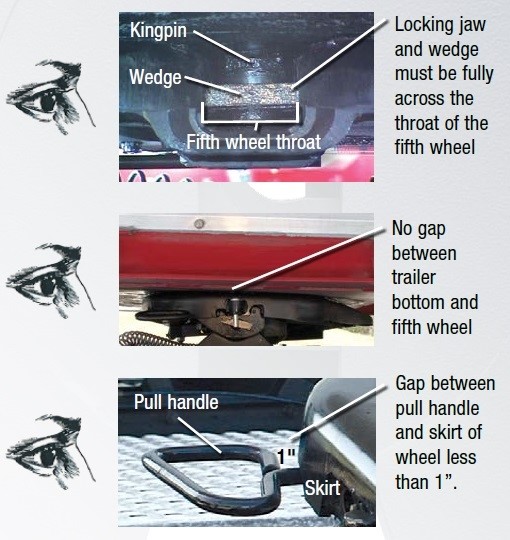

How to Tell if the Fifth Wheel is Properly Locked
Coupling is when a truck’s fifth wheel locking jaws lock around a trailer’s kingpin. This connection allows the truck to haul the trailer. Improper coupling can result in damage to equipment and even serious personal injury or death, so it is important to understand how to tell if the fifth wheel is properly locked.
Before coupling, always inflate the tractor suspension air bags. Never attempt coupling with the tractor suspension air bags deflated, and do not inflate them while positioned underneath the trailer.
You are required by law to perform a visual inspection of the fifth wheel when coupling. To tell if the fifth wheel is properly locked, first perform a tug test by easing the tractor forward with the trailer brakes on to feel the resistance of the load. Set the parking brakes on the trailer and get out of the tractor to visually inspect that the fifth wheel is properly closed. Use a flashlight if necessary.
All three areas of the fifth wheel must be inspected to ensure that it is properly coupled. Check that the locking jaw and wedge are fully across the throat of the fifth wheel. Confirm there is no gap between the fifth wheel and the trailer plate. Make sure the pull handle is within 1 inch or less from the skirt of the fifth wheel. Use the below graphic illustrating the three critical areas of visual inspection drivers must perform after coupling.
Remember that you should never attempt to couple a fifth wheel that has snow, ice or debris in the throat area. Before coupling, remove these as well as all hardened lubricants that bind the locking mechanism.


